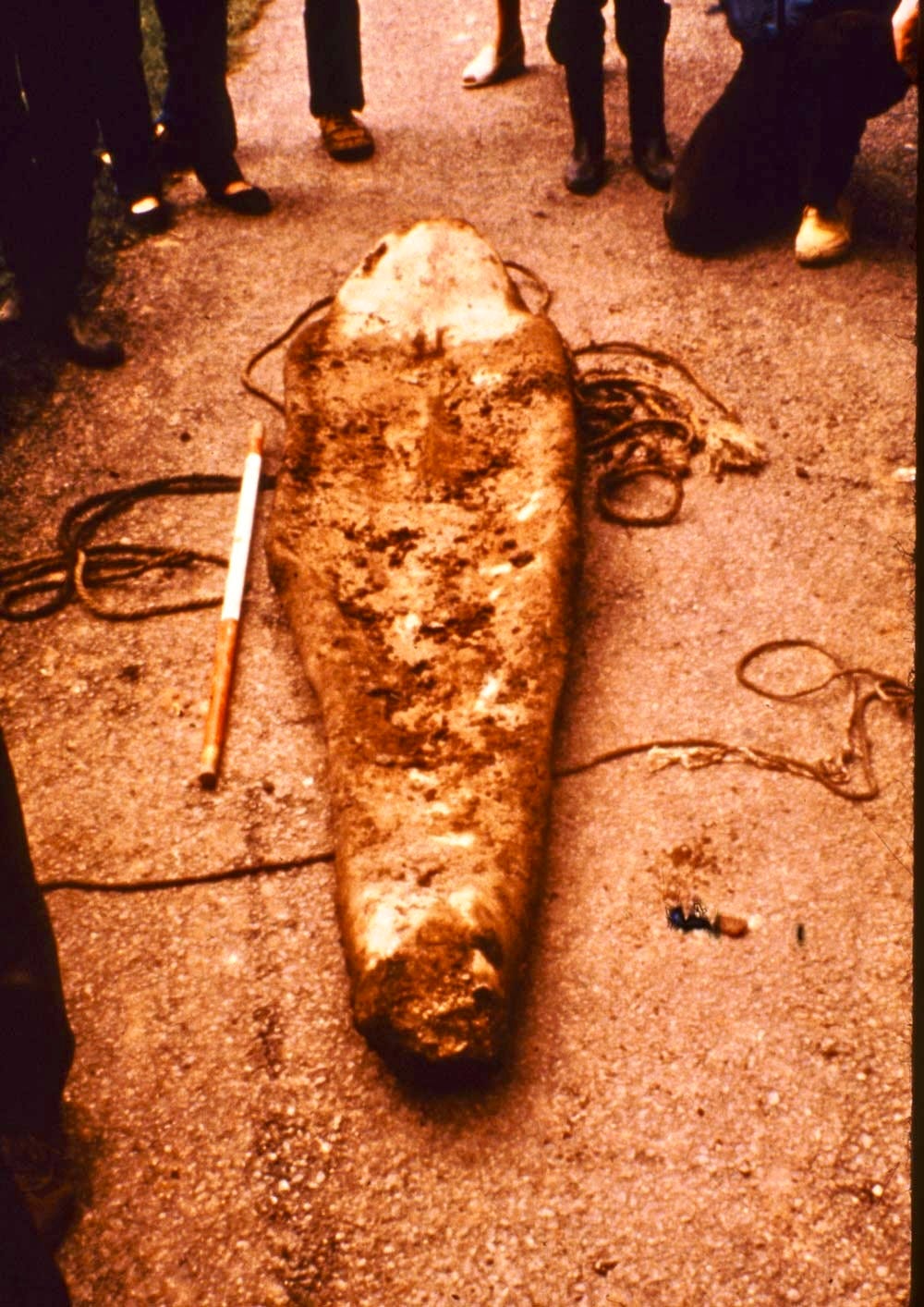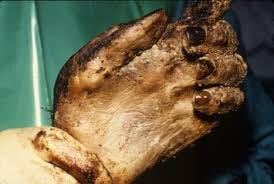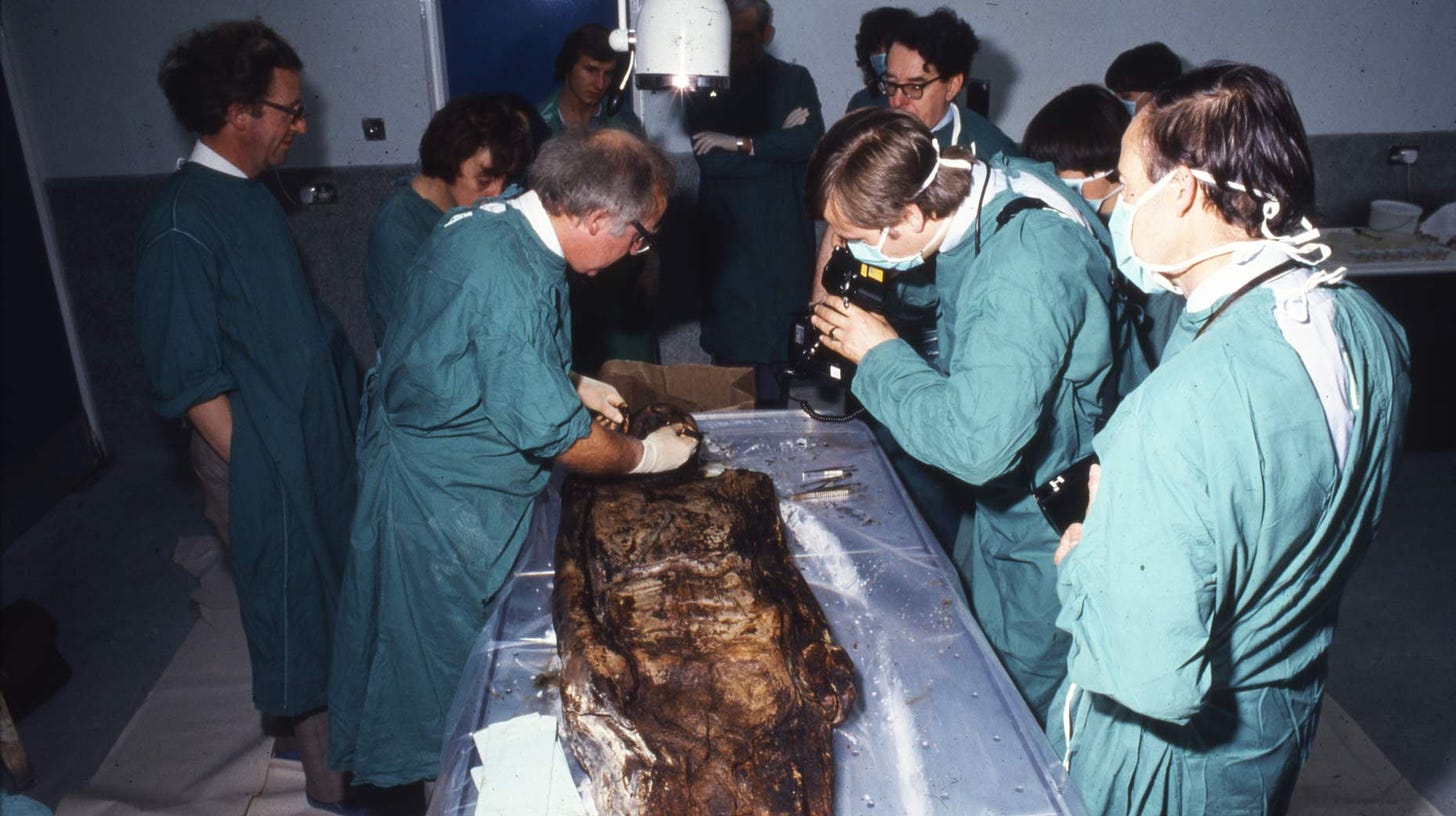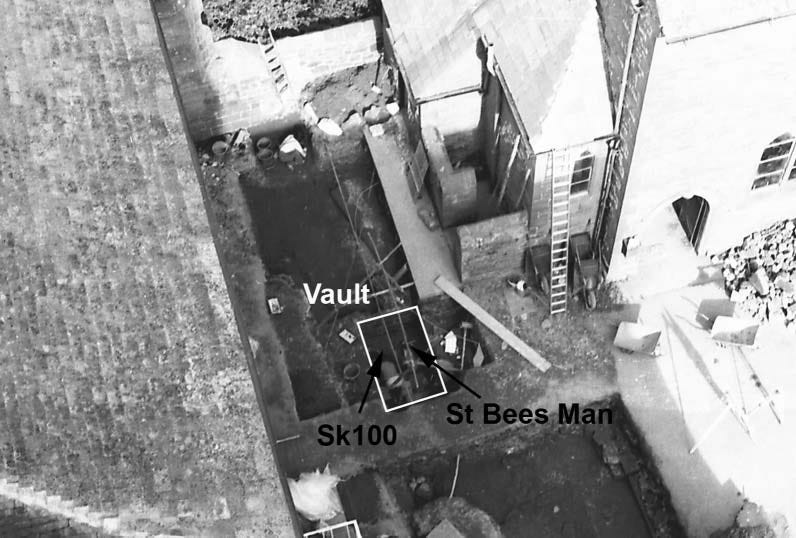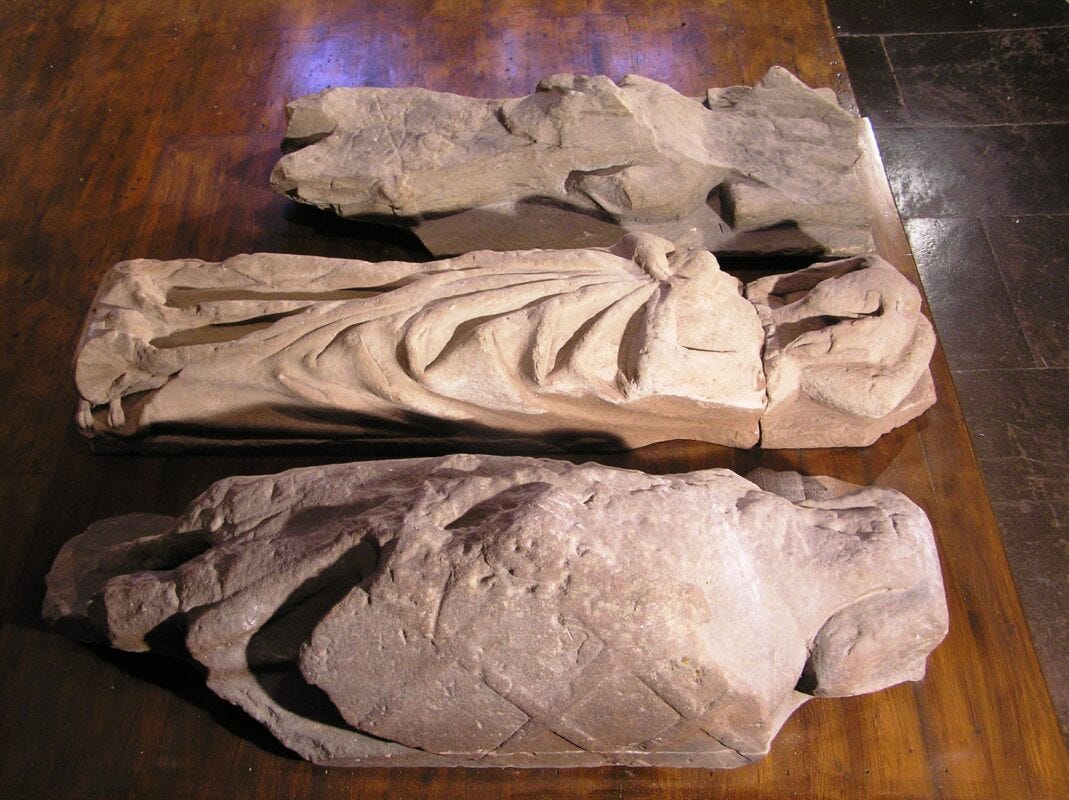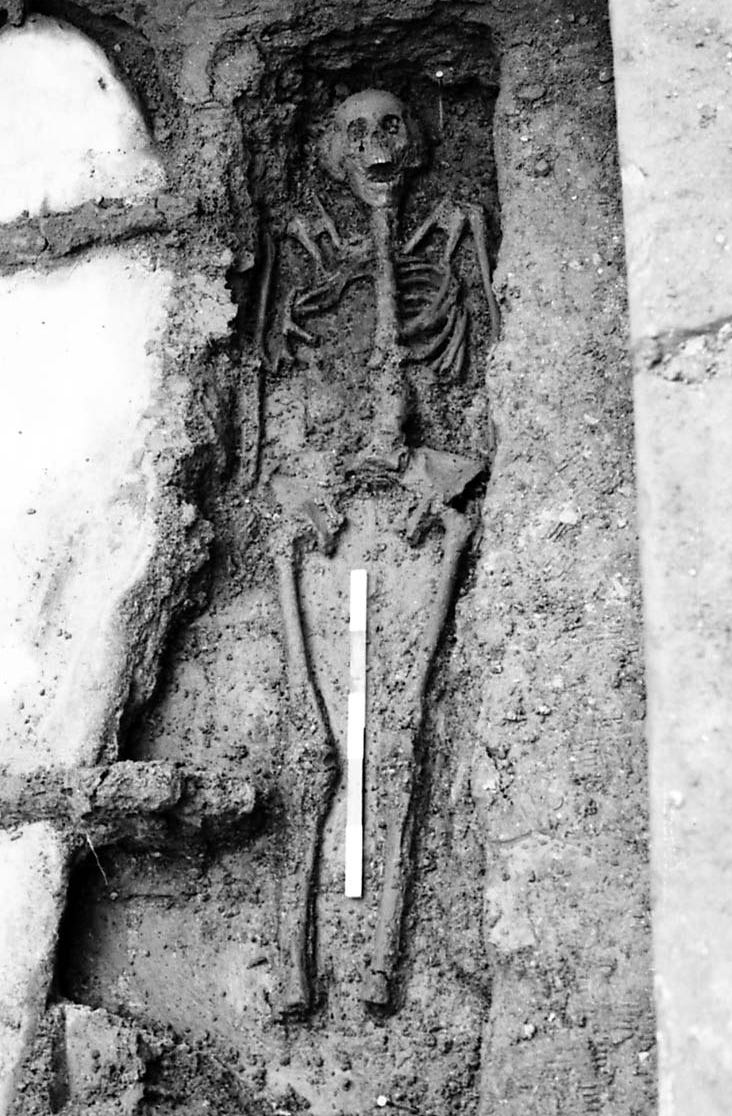Why was a Cumbrian knight buried in a lead casket with a string round his nether region?
A man-shaped metal sheath found beneath St Bees Priory revealed the violent, acquisitive world of 14th Century aristocrats
Despite having been buried for 600 years, the body within the metal capsule was astonishingly well preserved. The skin under the burial shroud, where it was not stained by boat varnish, was pinkish.
His nails were manicured, his fingerprints intact, his organs sound and much of his blood was still a red liquid. On his chest lay a six inch hank of dark hair, clearly not his own. Around his neck wound a cord that led down his body and was tied around his penis.
Apart from a puncture at the base of the casket and some mould, the body was wholesome and fresh. Experts later declared the corpse, its face seemingly distorted by a terrified scream, the best-preserved medieval body discovered in Britain - and one of the biggest archaeological mysteries ever uncovered in Cumbria.
The bizarre discovery set off an extraordinary archaeological hunt which produced new insights into the ruthlessly acquisitive, calculating and habitually violent character of the aristocrats who ran Cumbria in the 14th Century.
What the investigation established beyond doubt was that the medieval noblemen and women of England’s hotly contested northern borderlands were not the polite and urbane toffs that today’s aristocrats claim to be. They were hard nuts ready to do brutal work in return for advancing their financial and social prestige.
Given that only the wealthiest and most elevated figures in the realm at that time were considered worthy of the extremely expensive process of envelopment in a metal covering upon death, who was the man in the lead casket? And, perhaps just as intriguingly, what was the identity the lady who accompanied him in his tomb? Did id she give him the hank of hair?
The students had dug and scraped around the site of the former Benedictine priory at St Bees in Cumbria for two previous summer holidays in succession and had found nothing.
So, when the third annual dig began that August day in 1981, they were not hopeful of making a discovery. This time the young archaeologists decided to investigate a courtyard on the west side of the nine-hundred-year-old building. It was the site of an ancient chapel that crumbled in Victorian times and been demolished.
But one metre down, the diggers’ spades hit the aisle leading to the chapel’s altar. Beneath that they discovered a two-metre-long burial vault constructed out of finely carved ashlar, the best quality stone. Inside lay a hard lead container. It was not so much a coffin as metal wrapper shaped around a body.
The location of the casket suggested it had been interred ceremonially in a place of high honour before the altar. Also in the vault, alongside the lead capsule, was the distinctly smaller skeleton of a woman. She had been buried in a wooden coffin filled with grey clay and bound with iron bands.
If the excavators had known the lead casket was going to disgorge a whole body, they would not have split it open in front of a gaggle of primary school children. It had to be quickly conveyed to the nearest big fridge at West Cumberland Hospital where an autopsy was to take place.
The orderly’s questions when the body was checked in were slightly comic. “Name of deceased?” “Not known.” “Date of death?” “Well, sometime between 1290 and 1500”. “Next of kin?” “Pass.” “Cause of death?” “Pass” …
Digging up any grave is bound to stir emotions among people living nearby, especially in a small community like St Bees. But the discovery of a whole fleshed person who stood about five feet six and had a recognisable face, hands, short hair going grey, clipped beard and, internally, blood and organs was especially poignant.
The body of the man, estimated later at 38 years old, was naked except for a piece of fabric that had been crudely ripped from one of the shrouds and used as a loincloth. The stomach still retained the remnants of his last meal: porridge with grapes.
Although otherwise healthy, he would have been in constant pain during the last years of his life because he had terrible teeth that were seriously worn down as if he had spent years eating gritty food.
Beneath the lead, St Bees man’s body was bound in two shrouds and painted with dark brown pine pitch not unlike the resin used to waterproof the hulls of medieval ships. By coating the body in this watertight glue, the undertakers excluded air and bacteria and thereby hoped to inhibit decay on the long journey home. They did their work better than they knew - the body had failed to decay because they sealed the body from the air close to the time of death.
The pathologist found St Bees man had undergone a botched dental operation to extract the third molar on the right of his bottom jaw between five and twelve months before his death during which the roots of the tooth had broken away.
He also had pus-filled abscesses in two of his upper molars and these had drained into his left sinus, probably causing a painful bacterial infection. Although the dentistry was inept, tooth extraction was an extreme rarity in the Middle Ages, and it was a treatment given only to important people.
Being buried in a lead sheath was even more rare. One of the few who were given a metallic casket was Edward of Woodstock, the eldest son of Edward III. Known to history as the Black Prince, he was regarded as the greatest knight of his time. The lead capsule was a tantalising but baffling find.
Ian McAndrew and Doug Sim of St Bees Parish Council wrote that they were left “searching an impossibly wide field” in trying to pin down the man’s identity. Then someone remembered that the priory contained some badly damaged medieval effigies that had originally lain in the now-demolished chapel. Could they offer any clues? They were extremely hard to interpret.
One effigy depicted a chainmail wearing, shield-carrying, cross-legged knight made of wood. But it had fallen prey to beetles sometime between 1777 and 1816 and crumbled away. A 17th century drawing revealed it was originally placed in the chancel, not near the altar so it could be eliminated.
The second effigy wore chainmail and carried a so-called “fretty” shield, bearing a type of cross-hatch design. Six medieval Cumbrian families employed this device in their heraldry. A chronicle in St Mary’s Abbey, York, mother church of St Bees, indicated this was Robert de Harrington, the man who probably paid for the chapel to be built. But he died at fifty so he could not be the man in the casket.
The third effigy had no heraldic bearings, wore the classic plate armour of a medieval knight and was depicted holding a chalice resembling the Holy Grail that Jesus drank from at the Last Supper. This was another weird thing - images of such holy symbols as chalices were almost exclusively reserved for priests. Yet the lead man could not be a priest because a woman was buried beside him, something forbidden by the Catholic clergy’s vow of celibacy.
The archaeologists were convinced the knightly accoutrements of the third effigy had revealed the identity of their man: he was highly likely to be Anthony de Lucy, the last Lord of Cockermouth and Egremont, who died in 1368.
He is likely to have worn the string around his penis as a sign of humility while engaged in a religious quest. So, who was the woman buried alongside? Was she the sweetheart who gave him the keepsake?
Forensic analysis revealed the woman must have been between thirty-six and forty-five years old, or even perhaps in her fifties, when she died. This was a momentous finding. It ruled out the female body being Anthony’s wife, Joan. The reason is that, records show, Joan lived well into her sixties if not seventies.
The age of death indicated that the female body must have belonged to Anthony’s sister, Maud, who inherited the de Lucy family estates when Anthony, the last of his family’s male line, died.
The identification was clinched because Maud enjoyed an extremely privileged diet for a special reason. She contracted a painful and disfiguring dislocation of the lower jaw in childhood, forcing her to eat lop-sidedly. As a result, it appears she preferred to eat fish and her bones showed up as being very high in nitrogen as a result.
But this was just the start of the saga. None of this explained how Anthony ended up in a high-status lead burial sheath. What was his exact relationship with the aristocratic women and the other strange elements of his grave accoutrements, particularly the hair and the string around his penis? And, indeed, why, how and where did he die? What was the nature of his religious quest? Why was he undertaking it? The answer to those questions did eventually emerge - and offered an unprecedented insight into upper class lives in 14th Century Cumbria.
This is merely an extract. You can read the rest of this piece in a new book called Secrets of the Lost Kingdom. You can buy the book at The New Bookshop, Main Street, Cockermouth, at the Moon & Sixpence cafe at Lakeside, Keswick, Bookends in Keswick and Carlisle, and Sam Read in Grasmere.
Or you can get a copy instantly here:
https://www.fletcherchristianbooks.com/product/secrets-of-the-lost-kingdom




